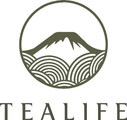Ultimate Guide to Kamairi-Cha (2021)

Here's a rare type of Japanese tea with a characteristic scent - produced from a very different manufacturing method. You might recongize a similar scent from a different tea!
Here, you'll learn everything you need to know about Kamairi-cha.
What is Kamairi-cha?
The Taste of the Kamairi-cha

The aroma
The taste
The Health Benefits

Other Names and Related Names
Kamairisei-Tamaryokucha
Kamaguri-cha
Kamaguri-cha is another name for the Kamairi-cha. "Guri" is an onomatopoeia of the green tea leaves being curved into a round shape. Depending on the areas, this name is more commonly used.
Kamanobicha
Kamanobi-cha is also a type of Japanese green tea that is made in a kettle. Similar to Kamariri-cha, Kamanobi-cha also is roasted instead of steamed. However, unlike Kamairi-cha, it goes through the process of organizing and shaping the leaves. This is usually conducted to prepare the teas for better extraction, and for better presentation.
How Best to Prepare Kamairi-cha?
Normal-grade Kamairi-cha | High-grade Kamairi-cha |
Servings | 2 servings | 2 servings |
Water (mL) | 200 ml | 200 ml |
Leaves (g) | 6g | 6g |
Leaves (roughly in teaspoons) | 3 tsp | 3 tsp |
Temperature (Celsius) | 90° | 70° |
Brewing time (Seconds) | 90 seconds | 90 seconds |
Chart: Kamairi-cha Brewing Instructions
- Best to be prepared in hot water - 70 to 90 degrees, depending on the grade of the Kamairi-cha. Use about 6g to prepare 200 ml of tea. Learn more about how to prepare delicious Kamairi-cha here.
- Soft water with hardness of between 30 to 80 is said to be the best for extracting the taste and aroma of green tea. The tap water in Singapore is "moderately soft", which makes it perfect for Japanese Tea.
How is it made? (Manufacturing Method)
(Manufacturing Method)
- Steaming the leaves to stop oxidation
- Shape the leaves for better extraction and presentation
- Drying the leaves for storage
The Kamairi-cha has 2 significant differences.
Firstly, it will roast the leaves to stop oxidation. It is roasted at high temperatures of between 350 and 400 degrees Celsius. Secondly, it does not go through the "shaping" process. Therefore, the steps to manufacture Kamairi-cha will look like this.
- Roasting the leaves in a kettle to stop oxidation
- Continue to stir in the kettle to reduce humidity and round the leaves
- Final drying under the sun for storage
There is also the Ureshino-sei and the Aoyanagi-sei, depending on the slight differences in the tilt of the kettle during the roasting.
This is a type of Kamairi-cha where the kettle is tilted 45 degrees during the roasting. The more the tilt, the rounded the leaves will become.
This is a type of Kamairi-cha where the kettle is not tilted during the roasting.
Areas
Kamairicha is mainly produced in the Kyushu area of Japan. They are more common in areas such as the Saga, Nagasaki, Miyazaki, and Kumamoto prefectures. It is sometimes produced in the Shizuoka and Kouchi prefectures as well.
History
FAQ
The Houjicha and Kamairi-cha are two very different teas. You can tell by the color of the leaves that they are extremely different.


Houjicha leaves
The difference is the timing of the roasting. The Kamairi-cha is roasted on a pan right after harvesting, in order to stop the oxidation of the tea leaves. You can say the roasting takes place as the first step.
On the other hand, a Houjicha is a tea that takes tea leaves which have already been steamed in order to stop the oxidation. From there, they roast it again, turing the leaves into a brownish color.

